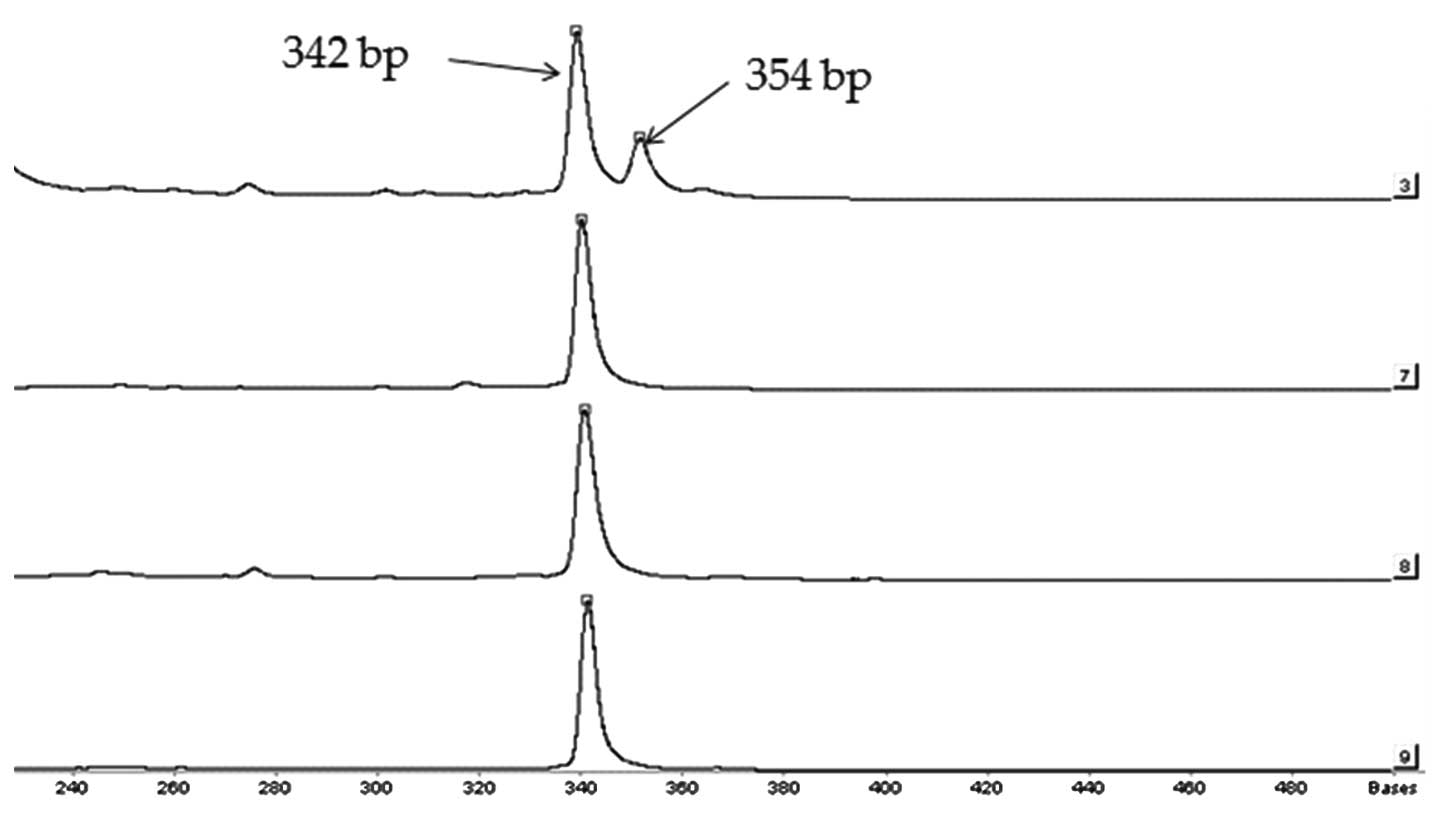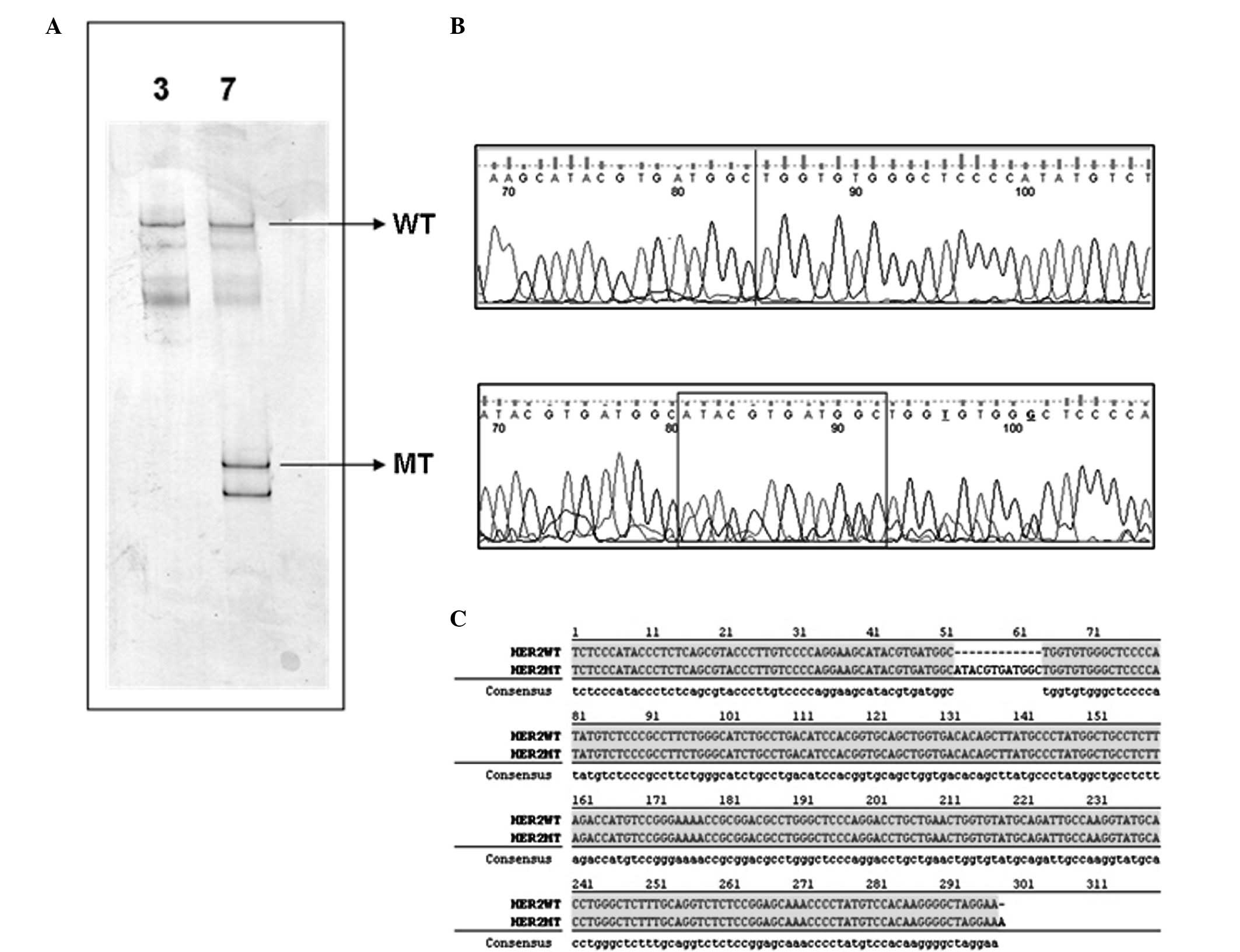Spandidos Publications style
Krawczyk P, Nicoś M, Powrózek T, Mlak R, Sawicki M, Jarosz B, Pająk B, Kucharczyk K, Stencel D, Trojanowski T, Trojanowski T, et al: Sensitive methods for the detection of an insertion in exon 20 of the HER2 gene in the metastasis of non‑small cell lung cancer to the central nervous system. Oncol Lett 6: 1063-1067, 2013.
APA
Krawczyk, P., Nicoś, M., Powrózek, T., Mlak, R., Sawicki, M., Jarosz, B. ... Milanowski, J. (2013). Sensitive methods for the detection of an insertion in exon 20 of the HER2 gene in the metastasis of non‑small cell lung cancer to the central nervous system. Oncology Letters, 6, 1063-1067. https://doi.org/10.3892/ol.2013.1495
MLA
Krawczyk, P., Nicoś, M., Powrózek, T., Mlak, R., Sawicki, M., Jarosz, B., Pająk, B., Kucharczyk, K., Stencel, D., Trojanowski, T., Milanowski, J."Sensitive methods for the detection of an insertion in exon 20 of the HER2 gene in the metastasis of non‑small cell lung cancer to the central nervous system". Oncology Letters 6.4 (2013): 1063-1067.
Chicago
Krawczyk, P., Nicoś, M., Powrózek, T., Mlak, R., Sawicki, M., Jarosz, B., Pająk, B., Kucharczyk, K., Stencel, D., Trojanowski, T., Milanowski, J."Sensitive methods for the detection of an insertion in exon 20 of the HER2 gene in the metastasis of non‑small cell lung cancer to the central nervous system". Oncology Letters 6, no. 4 (2013): 1063-1067. https://doi.org/10.3892/ol.2013.1495
















